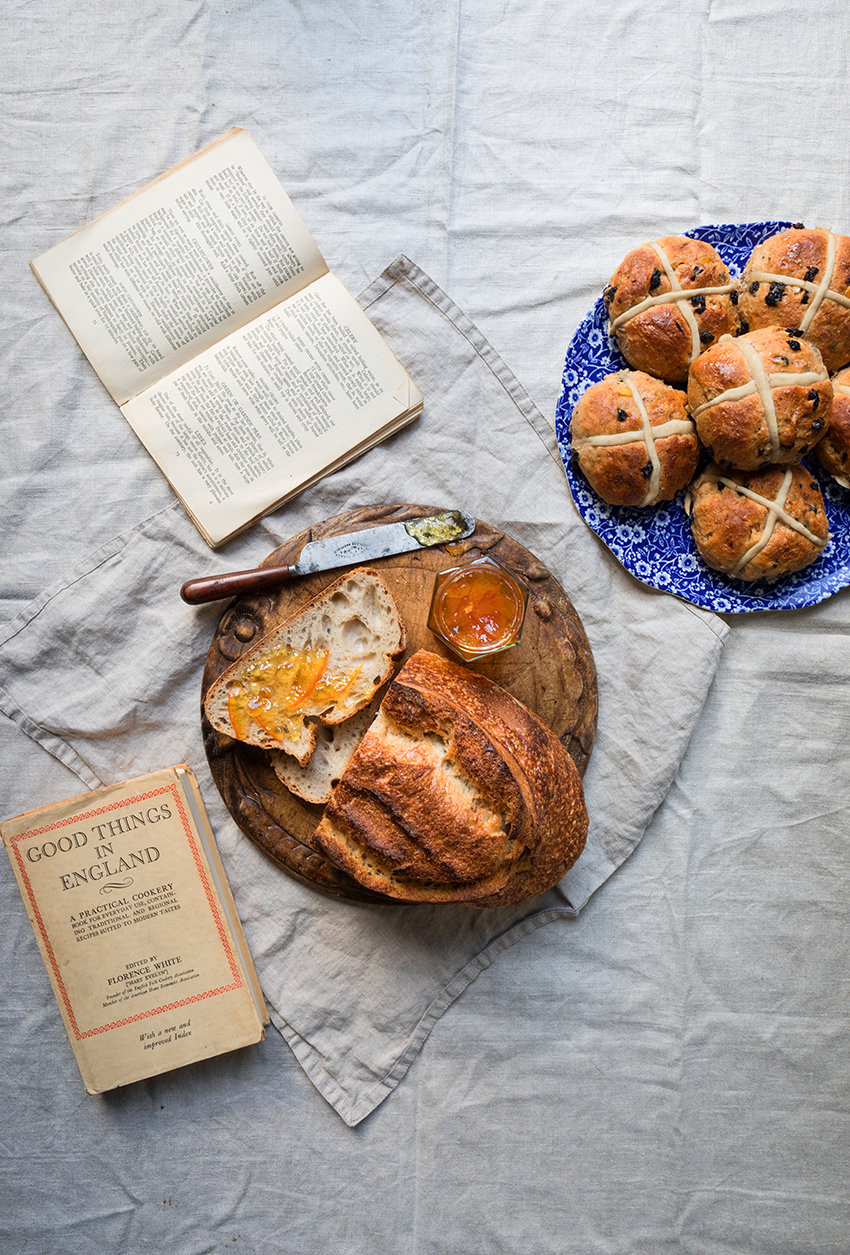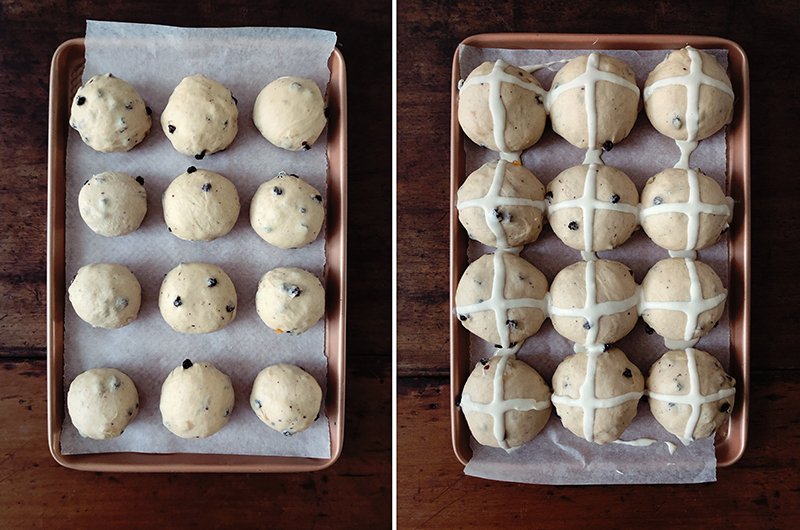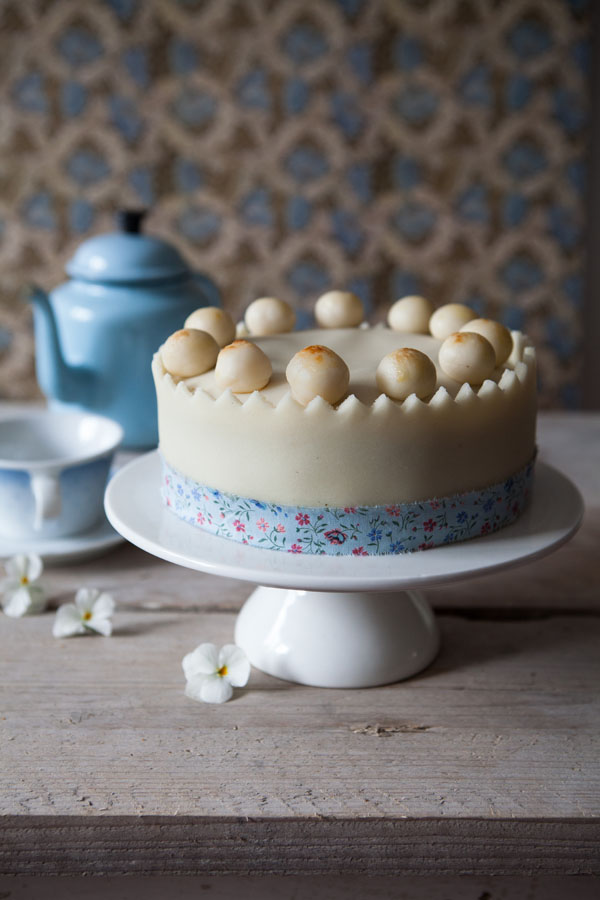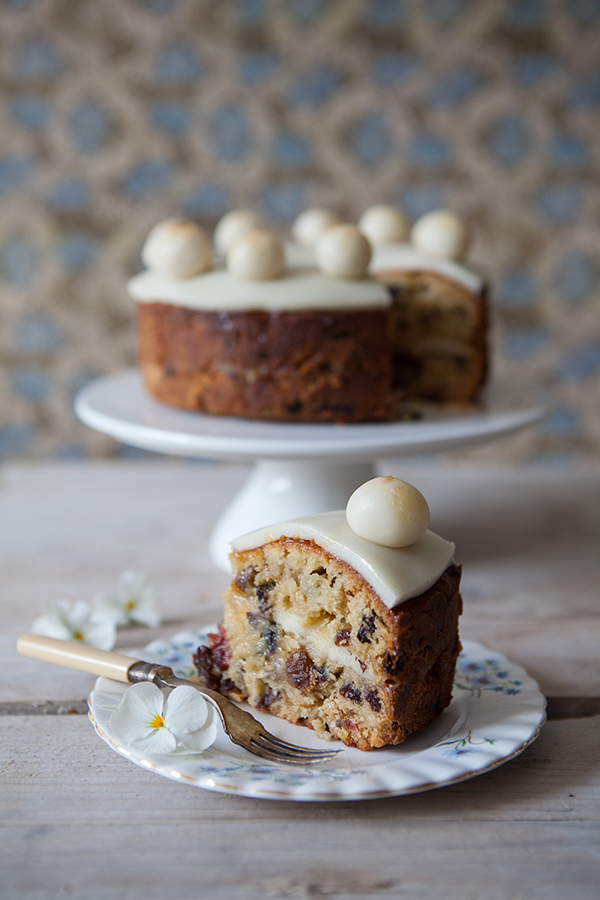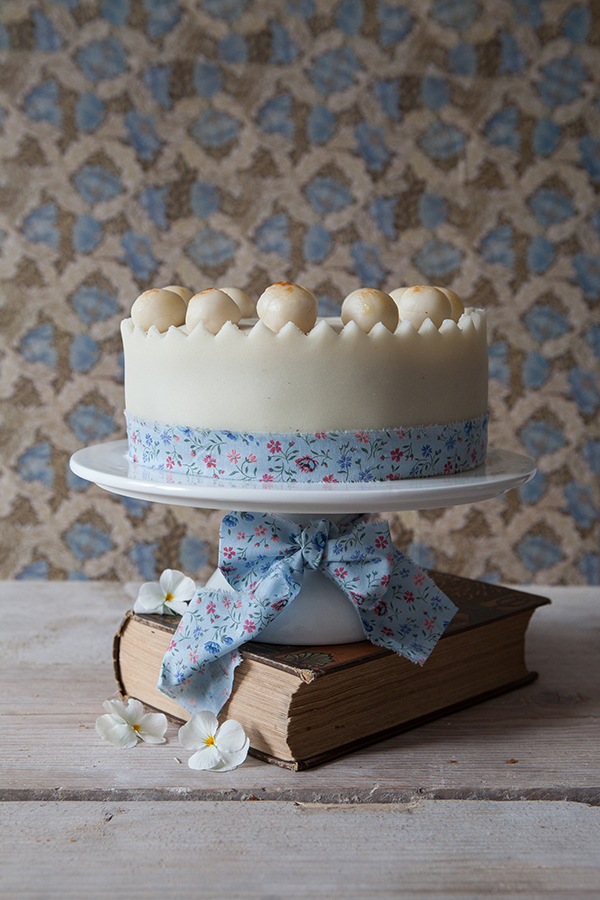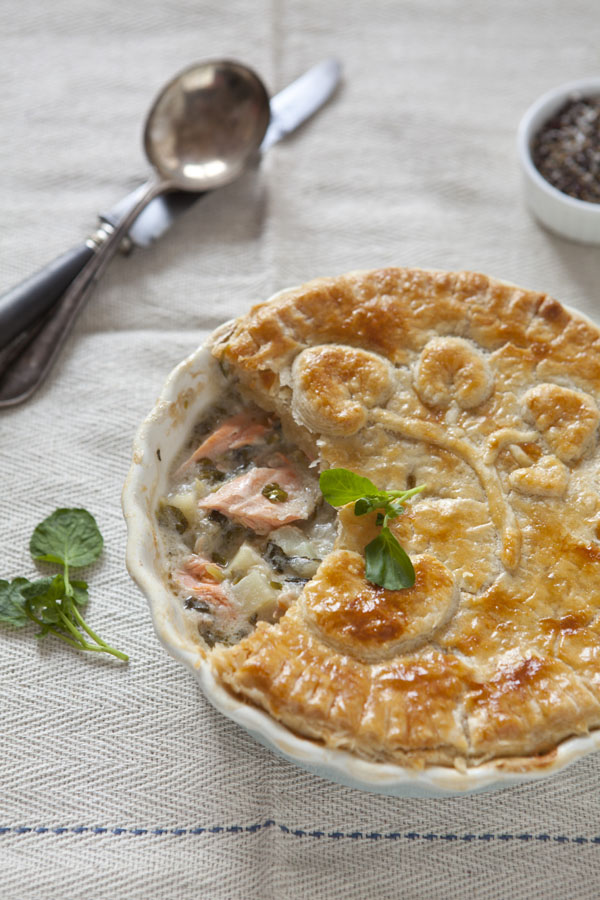The post Hot Cross Buns – The Tale Of English Buns # 2 appeared first on Miss Foodwise.
]]>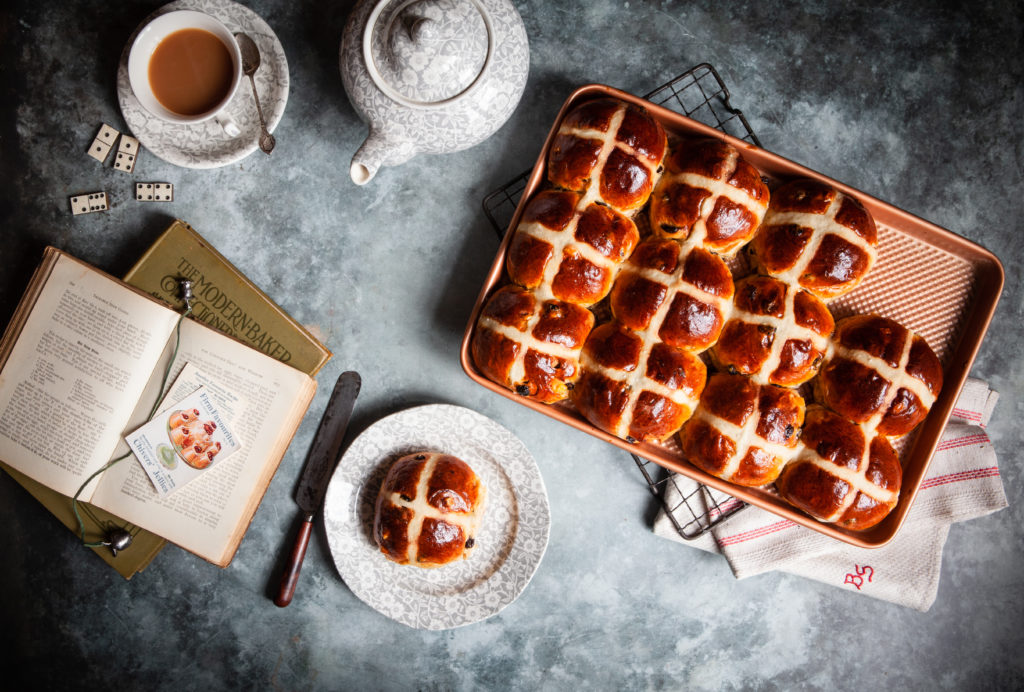 Bake them on Good Friday: The history and tales behind these spiced buns are plenty and intriguing, steeped in folklore dating back as far as Anglo-Saxon Britain. This is perhaps one of the most iconic of buns. Recipe from my new book Oats in the North, Wheat from the South, out with Murdoch Books (2020)
Bake them on Good Friday: The history and tales behind these spiced buns are plenty and intriguing, steeped in folklore dating back as far as Anglo-Saxon Britain. This is perhaps one of the most iconic of buns. Recipe from my new book Oats in the North, Wheat from the South, out with Murdoch Books (2020)
Every year well before Easter Marks & Spencer starts piling up Hot Cross Buns from chocolate & salted caramel to blueberry and marmalade. Marmalade I can understand as you do add candied orange peel to the dough, but chocolate & salted caramel and blueberry just creates a whole different bun, the cross being the only reminder of a traditional Hot Cross Bun. But what is traditional or original with a recipe as old as this one? If you scroll down to the recipe you might discover I too dare to add something which isn’t traditional from time to time.
The tradition of baking bread marked with a cross is linked to paganism as well as Christianity. The pagan Saxons would bake cross buns at the beginning of spring in honour of the goddess Eostre – most likely being the origin of the name Easter. The cross represented the rebirth of the world after winter and the four quarters of the moon, as well as the four seasons and the wheel of life.
The Christians saw the Crucifixion in the cross bun and, as with many other pre-Christian traditions, replaced their pagan meaning with a Christian one – the resurrection of Christ at Easter.
According to Elizabeth David, it wasn’t until Tudor times that it was permanently linked to Christian celebrations. During the reign of Elizabeth I, the London Clerk of Markets issued a decree forbidding the sale of spiced buns except at burials, at Christmas or on Good Friday.
The first recorded reference to ‘hot’ cross buns was in ‘Poor Robin’s Almanac’ in the early 1700s.
‘Good Friday come this month, the old woman runs. With one or two a penny hot cross buns.’
This satirical rhyme was also probably the inspiration of the commonly known street vendors cry:
‘Hot cross buns, hot cross buns!
One ha’penny, two ha’penny, hot cross buns!
If you have no daughters, give them to your sons,
One ha’penny, two ha’penny, hot cross buns!’
A century later the belief behind the hot cross bun starts to get a superstitious rather than a religious meaning.
In London’s East End you can find a pub called The Widows Son, named after a widow who lived in a cottage at the site in the 1820s. The widow baked hot cross buns for her sailor son who was supposed to come home from the sea on Good Friday. He must have died at sea as he never returned home, but the widow refused to give up hope for his return and continued to bake a hot cross bun for him every year, hanging it in her kitchen with the buns from previous years.
When the widow died, the buns were found hanging from a beam in the cottage and the story has been kept alive by the pub landlords ever since a pub was built on the site in 1848.
For whatever reason or belief you choose to bake a batch of hot cross buns on this Good Friday, it will most likely be to enjoy them with your loved ones. May it be for Eostre, Easter, the beginning of a much awaited spring or as a superstitious amulet for when you set sail, bake them with love!
This recipe is a revised version from one that appeared years ago on this site. I advise to use this one.
So here is how you bake your own:
Hot Cross Buns
What you will need
15 g (½ oz) dried yeast
300 ml (10½ fl oz) lukewarm full-fat milk
500 g (1 lb 2 oz) strong white bread flour
60 g (2¼ oz) raw (demerara) sugar or white sugar
1 tsp ground cinnamon
½ tsp ground mace
¼ tsp ground nutmeg
1/8 tsp allspice
1/8 tsp ground ginger
1/8 tsp ground coriander
70 g (2½ oz) butter, at room temperature, cubed
1 egg
5 g (1/8 oz) fine sea salt
150 g (5½ oz) currants
50 g (1¾ oz) candied citrus peel
2 egg yolks + 2 tbsp milk, for egg wash
For the crosses
140-160 ml (5¼ fl oz) water (if your flour is old it needs more water, if fresh 140 will be enough)
75 g (2½ oz) plain (all-purpose) flour
For a 39 x 27 cm (15½ x 10¾ inch) baking tin (if you don’t want the buns to attach to one another while baking, use a larger tray or bake in two batches)
For the shiny glaze:
Melt 60 g plain white sugar in 5 tbsp water
Method:
Add the yeast to the lukewarm milk and stir briefly and gently to activate it. The yeast will start to foam up in clusters, which means it is ready for use. Combine the flour, sugar and spices in a large bowl or the bowl of an electric mixer fitted with a dough hook and put the butter on top. Pour half of the yeast mixture over the butter and start kneading. When the milk and butter are completely absorbed, add the rest of the yeast mixture, along with the egg. Knead for 5 minutes, then let the dough stand for a few minutes (at this point it will be very wet). Add the salt and then the currants and candied peel and knead for 10 minutes, scraping the dough off the dough hook and side of the bowl if needed, until the dough has come together in a smooth and elastic dough that is not too dry but also not terribly wet.
Cover the dough and set aside for 1 hour until it has doubled in quantity.
Meanwhile, line the baking tin with baking paper. Mix the water and flour into a thick batter for the crosses and scoop it into a piping bag with a small nozzle and cover until needed.
Divide the dough into 12 equal pieces. Take a piece of dough and lightly flatten it on your work surface, then pull the outer parts in like a purse and gently squeeze together like a dumpling so that the dough can no longer split open while rising.
Turn the dough over so the squeezed ends are on the bottom. It should be nice and smooth on top – if not, flatten it and start again. Place in the baking tin and continue shaping the other buns, adding them to the tin to form neat rows.
Cover the tray of buns with a light cotton cloth and wrap it in a large plastic bag (I keep one especially for this purpose). Rest the dough for 1 hour or until the buns have doubled in size. Towards the end of the resting time, preheat the oven to 210°C (410°F).
Brush the buns generously with the egg wash, then carefully pipe a cross onto each bun. Transfer to the oven and bake for about 20-30 minutes until golden brown. (if you don’t want to egg wash, just brush on the sugar syrup as mentioned in the recipe, or do both!)
The buns are best eaten on the day they’re made. The next day they can be revived in a hot oven for a few minutes. You can also freeze the baked buns, thaw and then pop them in a hot oven for a few minutes.
These buns are excellent halved, then toasted and spread with copious amounts of farmhouse butter.
Freeze for up to a month. Leftover buns make a perfect Hot Cross Bun and Butter pudding, see my recipe here >
*Letting the dough rest for a while without salt is called an “autolyse”. It allows for enzymes to do part of the gluten development before you start to actually knead it. Adding salt with the yeast can kill it or slow down the process. This way it forms a developed dough more quickly.
RECIPE FROM MY BOOK Oats in the North, Wheat from the South (The British Baking Book (US), Brits Bakboek (NL-BE)) – You can order a copy here >
You might also enjoy (more buns of course):
For Bath Buns go here >
For Cinnamon buns go here >
For Santa Lucia Buns go here
The post Hot Cross Buns – The Tale Of English Buns # 2 appeared first on Miss Foodwise.
]]>The post Of Simon, Nell and Simnel cakes appeared first on Miss Foodwise.
]]>I haven’t been a pious Christian since I was 6, Lent only means one thing to me, I will have a birthday soon. Easter wasn’t something I particularly looked forward to, and I was surprisingly unimpressed with the overly sweet milk chocolate eggs the easter bunny brought me. Nor did I enjoy the big family gatherings as they always resulted into political debates, and dispute. It is most certainly the reason for my aversion to politics and politicians.
To Dianeme.
A Ceremonie in Glocester.I’le to thee a Simnell bring,Gainst thou go’st a mothering,So that, when she blesseth thee,Half that blessing thou’lt give me.
At some time along the way of time the legend of Simon and Nell appeared. A story most people have heard from their grandparents.
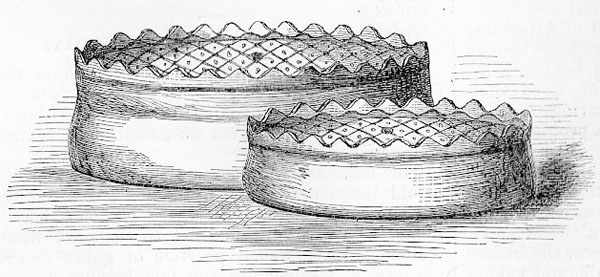 |
| The Book of Days |
The Simnel cake today is a fruit cake that is slightly lighter than a Christmas tide fruitcake. It is covered in marzipan these days instead of a tough white crust and a layer of marzipan is baked into the middle of the cake. On top of the cake are placed 11 balls to represent the true apostles, leaving off Judas Iscariot the traitor. When exactly the 11 balls came into practice isn’t clear but I wouldn’t be surprised if it were the Victorians
My Simnel cake omits the spices and only holds candied peel and dried fruits which give the cake a very sweet taste.
What do you need
- 300 g mixed fruit (currants, sultanas, raisins)
- 100 ml sherry
- 250 g butter, unsalted and at room temperature
- 230 g raw cane sugar
- 4 free range eggs
- 320 g plain white flour
- pinch of salt
- 40 g candied lemon peel, chopped
- about 750 g of marzipan
- orange marmalade, a few spoonfuls
- optional: 1 egg to egg wash the top
Method
The day before, soak the mixed fruit in the sherry
Preheat your oven to 160°c
Prepare a round spring form by lining it with baking parchment
Roll out 1/3 of the marzipan and use the spring form as a guide to cut out a circle of the same size.
Cream the butter and the sugar and add the eggs one at a time.
Add the flour and combine well
Now fold in the mixed fruit and candied peel
Scoop one half of the dough in the spring form and place the marzipan on top
Now scoop in the remaining dough and place in the oven for 1 hour and 15 minutes.
Leave to cool in the baking tin.
Now roll out half of the remaining marzipan and cut out another round the same size as your cake. Roll 11 balls from the leftover marzipan.
If you want to cover the sides of the cake, roll out the last of the marzipan creating a long ribbon.
When the cake is cooled, turn on the oven grill at 160°c and smear on the orange marmalade on top to place your marzipan on the cake followed by the balls.
Egg wash your balls and place under the grill until the balls have a golden or brownish color.
Serve with tea, lots of it.
Not a fan of so much marzipan, this is an option too!
You might also enjoy
Hot Cross buns
Hot Cross bun and butter puddingPlease leave a comment, I love reading them x
The post Of Simon, Nell and Simnel cakes appeared first on Miss Foodwise.
]]>The post Watercress and Trout Pie – Fit for a Watercress Queen appeared first on Miss Foodwise.
]]>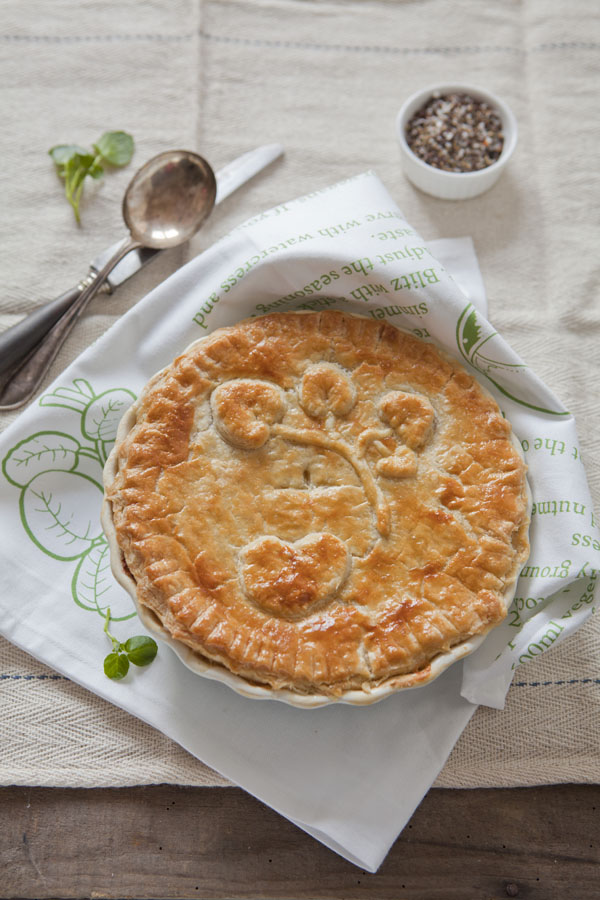
Let me tell you a story about a strong independent woman, a working class woman who became one of the most iconic figures in British food history. Her name was Eliza James and she was called ‘The Watercress Queen’.
In the late 1800, the little Eliza went from factory to factory in Birmingham with her bunches of wild watercress. As ‘the poor man’s bread‘ was so popular with the working class she soon started to sell larger and larger quantities. She worked her way up and moved her business to London where she soon became the favoured supplier of nearly all the London restaurants and hotels. She was able to acquire watercress farms in Hampshire and Surrey making her the biggest owner of watercress farms in Europe. But even when she became part of a well-to-do class, she remained to work at her Covent Garden stall for over 50 years.
Steve – who you might remember from last weeks post – explained that Eliza founded the James & Son company and trade marked the name Vitacress, the name Vitacress was then sold on to Malcolm Isaac who founded Vitacress Salads which is the name of the company today. Eliza’s Hampshire farms are still producing watercress to this day and are still a part of Vitacress. The farm I visited was one of the original farms and made me think about Eliza James and her hard work. I think she deserved her title and isn’t it just one of the most romantic stories of a working class woman trying to build an emporium out of watercress, to do well by herself and her family.
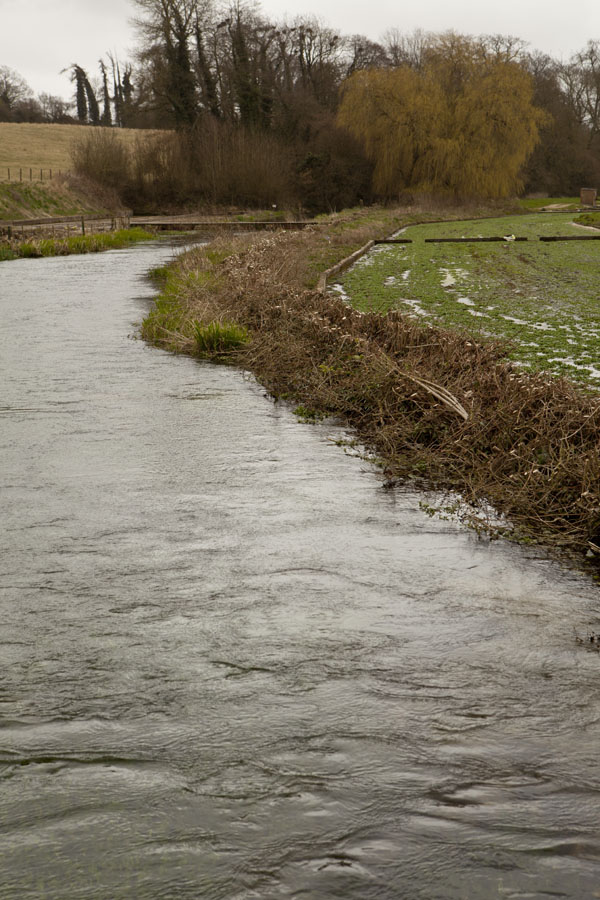 |
| The stream that feeds the watercress beds |
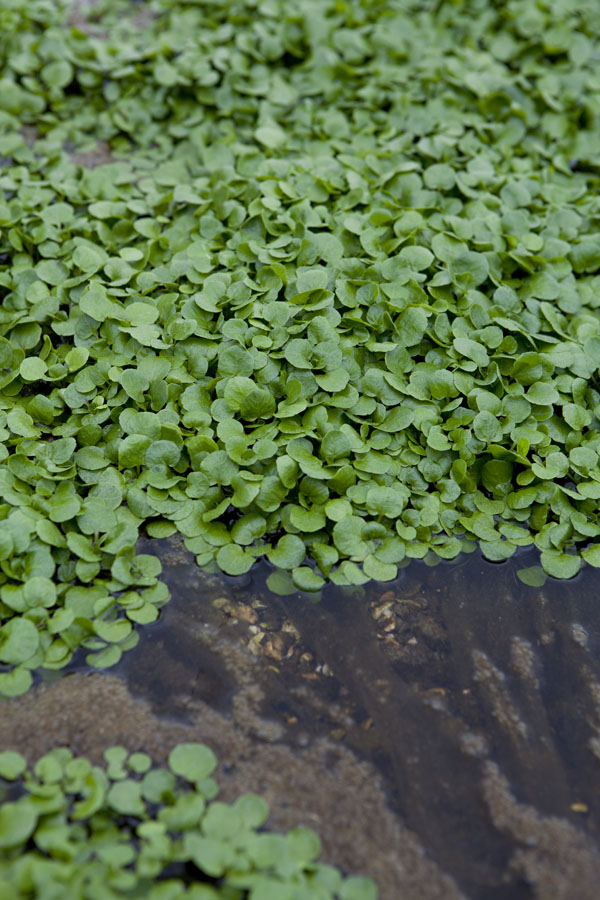 |
| Baby cress |
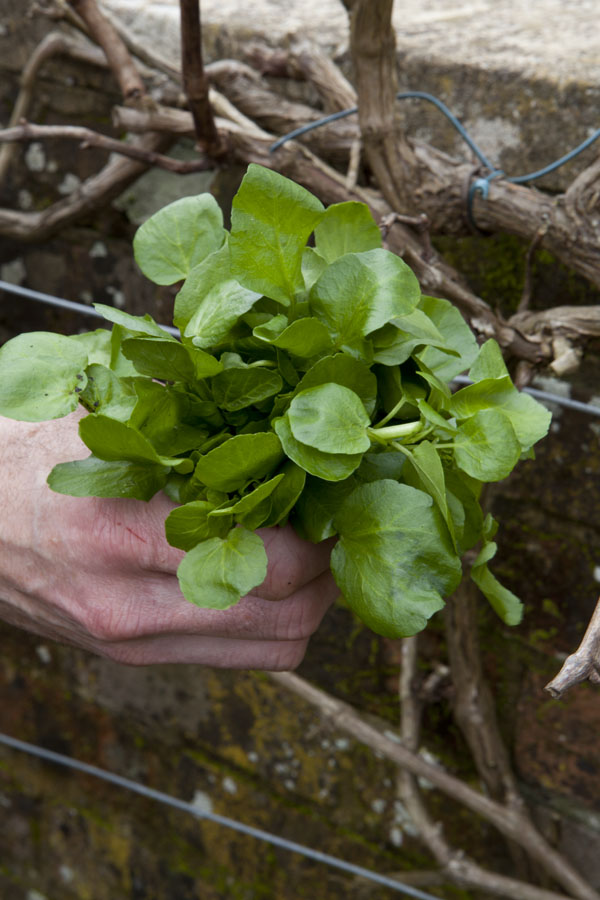 |
| Steve and his Poor Man’s bread from previous post |
As promised earlier this week here I am with my watercress and trout pie. Spring has been dreadfully cold and rainy and although I am longing for crisp green salads a pie is now very much needed to warm the spirits.
With my last bit of watercress from the farm in Hampshire I opted to bake a silky smooth fish pie. The river that feeds the watercress beds in Hampshire is full of brown trout so when I was at my fishmonger I opted for trout. With my only option being Steelhead trout today, the meat resembling more that of a salmon though less strong tasting and more delicate. I don’t care for salmon at all and avoid it where I can, unless cured, I do like salmon cured..
Water is so very important to watercress, it has to be clean spring water. The watercress leaves and stalks seem to be holding the water tightly, hanging on to all the goodness is has to offer.
Thank you Steve for showing me around, it was lovely meeting you!
What do you need
For the filling
- 1 teaspoon butter / 1 teaspoon olive oil
- 2 small celery sticks cut into small cubes
- 1 shallot cut finely
- 25 ml white wine
- Roux, enough to bind the sauce: see how you make it on this post >
- 400 ml water
- 1 large handful of fresh watercress chopped
- 2 trout filets or salmon if you rather use thatpotato 1 cup of 1 cm cubes
For the Rough puff pastry
- 225 g plain flour
- 1/4 teaspoon of sea salt
- 125 g unsalted butter in small cubes, fridge cold
- 1/2 teaspoon lemon juice
- about 125 ml ice cold water
For the pastry
- Sift the flour and salt into a bowl
- Add the cubes of cold butter and stir using a round bladed knife until all the butter is covered in the flour – do not break up the pieces of butter at this point
- Add the lemon juice and the water, one tablespoon at a time (you might not need it all) to bind the mixture into a lumpy dough with a wooden spoon or spatula, if the dough is too wet add some flour
- Turn the dough out on a clean lightly floured work surface and shape it gently into a brick, do not overwork the dough with your hands as it needs to stay cold
- Use a floured rolling pin to roll out the dough to a rectangle from about 5 mm thick
- Fold the dough in 3 by folding the bottom third up to cover the middle part of the dough and the top part you should fold down to cover the other 2 folded parts.
- Seal the edges firmly by pressing them down
- Wrap in cling film and put in the fridge for 15 min
- Take the dough out of the fridge and place it on a floured work surface, turn the dough so you can now do the same folding routine but in the other direction
- Repeat this process two more times so you have folded the dough in different directions 4 times
- Chill for 30 min before using or while you prepare the filling
For the filling
- Melt the butter and the olive oil in a pan big enough so your trout fillets can fit in nicely.
- Soften the onion and the celery for 5 minutes and add the wine, let it simmer for 5 minutes
- Pour in the water and bring to a gentle boil, leave to simmer for 5 minutes
- Gently place the trout fillets in the saucepan, make sure they are both covered with the liquid
- Let it simmer for 15 minutes until flaky but not completely done.
- Turn down the heat and remove the trout, put on a plate and cover with tinfoil to keep warm.
- Transfer the liquid to a deeper saucepan and bring to the boil
- Add the roux and cook until thickened
- If the sauce is too liquid, add more roux if you have some left or let it reduce on a medium fire while stirring
- Taste your sauce and add salt and pepper to taste.
- Now mix the sauce for 1 minute using a hand mixer with a chopping knife appliance
- Blanche the potato cubes briefly, they should still be quite rare
- Chop the watercress (with stalks) roughly
- Butter your pie dish and place in the blanched potato cubes and flake over the trout fillets, sprinkle over a few leaves of chopped watercress.
- Add the rest of the watercress to the sauce and simmer for a further minute
- Pour the sauce over the trout and potato and mix gently with a spoon so the sauce is evenly divided
- Remove the pastry from the fridge and roll it out on a floured surface until around 2cm larger than the pie dish.
- Brush the edge of the dish with beaten egg and lay the pastry over the filling.
- Trim off any excess pastry using a sharp knife, and knock up the edges with the back of a knife to create indentations.
- At this point you can decorate your pie with the leftover dough
- Brush lightly with beaten egg
- Bake your pie in a preheated oven at 200°c for about 25 minutes or until the pastry is golden brown.
You might also like
Stout, beef and oyster pie – poverty and oysters
The Poor man’s bread – a day at a watercress farm
The post Watercress and Trout Pie – Fit for a Watercress Queen appeared first on Miss Foodwise.
]]>